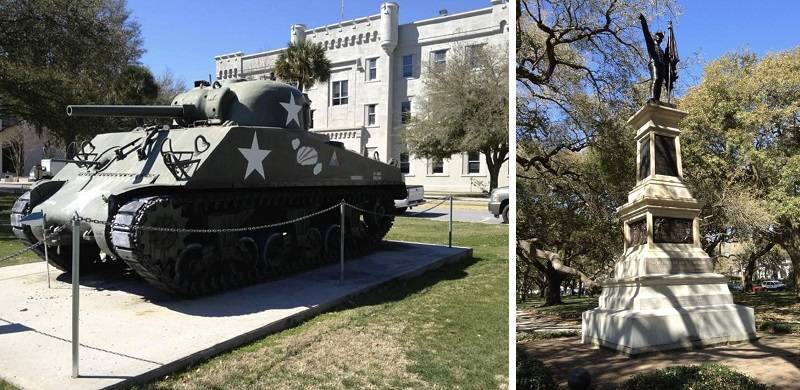
I was talking to a woman in Washington, DC, whose conference badge showed her name and Carolina. The first part of the state’s name was covered by her hair. I asked if she was from North Carolina. Her answer left me stunned: “Do I look like I am from the north?”
I had made a mistake. She was from South Carolina, but the intensity of her umbrage left me stunned. Apparently, the north-south distinction was a very sensitive issue, even a century and a half after the Civil War had ended.
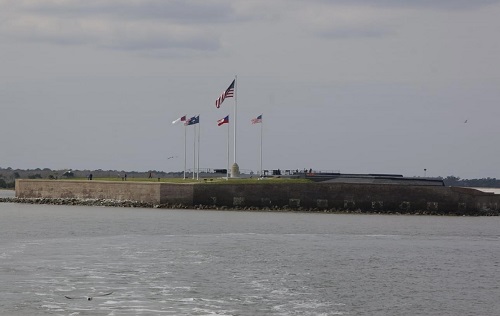 I had been to North Carolina a few times but never to South Carolina. I began to research the history of South Carolina. I came to know that it was the first state to secede from the Union, which back then consisted of 34 states. Its secession took place in December 1860. The state was not happy with Abraham Lincoln’s victory in the presidential elections since he had vowed to abolish slavery, which was central to its economy.
I had been to North Carolina a few times but never to South Carolina. I began to research the history of South Carolina. I came to know that it was the first state to secede from the Union, which back then consisted of 34 states. Its secession took place in December 1860. The state was not happy with Abraham Lincoln’s victory in the presidential elections since he had vowed to abolish slavery, which was central to its economy.
The first shots of the American Civil War were fired from Fort Sumter in Charleston in April 1861 by the cadets of The Citadel — the famous military academy of the South. For the four years that followed, eleven slave-owning states in the South formed the Confederacy that fought the other states of the Union.
The Civil War was brutal and devastating, featuring more than 200 named battles, often pitching family against family. The British historian John Keegan called this war “the most ferocious ever fought” in history. Perhaps the most famous of its campaigns was the ‘March to the Sea’ led by Major-General William Tecumseh Sherman of the Union.
It began in Atlanta and ended in Savannah on the coast of the Atlantic Ocean, in December 1864. Sherman’s forces burned down every town that stood in the way, except for Savannah, Georgia, which surrendered peacefully. Sherman’s march, terrible as it was in terms of the suffering it brought on civilians and soldiers alike, was strategically brilliant. It brought the South to its knees.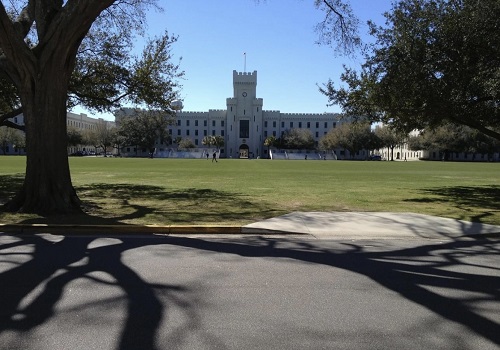
On 9 April 1865, General Robert E Lee surrendered the forces of the Confederacy to General Ulysses S Grant at the Appomattox Courthouse in Virginia. It was not just the war that ended with the surrender, the civilisation of the Antebellum (prewar) South also passed into history. Its passing was memorialised in the 1939 film Gone with the Wind which is set in Atlanta, Georgia.
I had traveled to Atlanta several times but always found it to be a very cosmopolitan city. There was hardly any trace of the Antebellum South. The only reminder of the Civil War was to be found on Stone Mountain on the outskirts of the city. On it were carved statues of General Robert E Lee and Stonewall Jackson and President Jefferson Davis of the Confederacy. Of course, there were no carvings of Lincoln or Sherman.
One day, I finally got the opportunity to visit Charleston, South Carolina. It was the only state where the Confederate flag was still embedded in the state flag. I assumed that more artifacts of the pre-Civil War civilisation lay buried there, waiting to be discovered. Apart from its historical significance, it has also become one of America’s most frequently visited cities.
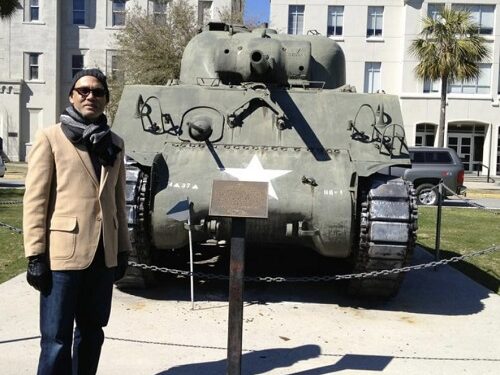
According to one guidebook, it was “America’s most intact colonial city,” well known for its “languid mystery and European charm, its historical architecture, and its exciting arts and restaurant scene.” We could hardly wait to see it.
Soon after our arrival, I toured the iconic Boone Hall Plantation — the city’s number one tourist destination. The main house is a marvel of antebellum architecture. It evoked Tara, the plantation in ‘Gone with the Wind’. The grounds were spacious and beautifully landscaped. What was a bit hard to take were the rows and rows of huts that were built to house the slaves. Inside the huts were effigies of the slave families going about the everyday business of life.
Next day we decided to check out The Citadel. This was still functioning as a military college. I had anticipated we would not be let in but entry was no problem. We were welcomed by the guard at the gate. There was a huge quadrangle in the center. We saw smartly dressed cadets marching by themselves. They would turn at 90 degrees when they came to a corner, like toy soldiers in a fairy tale.
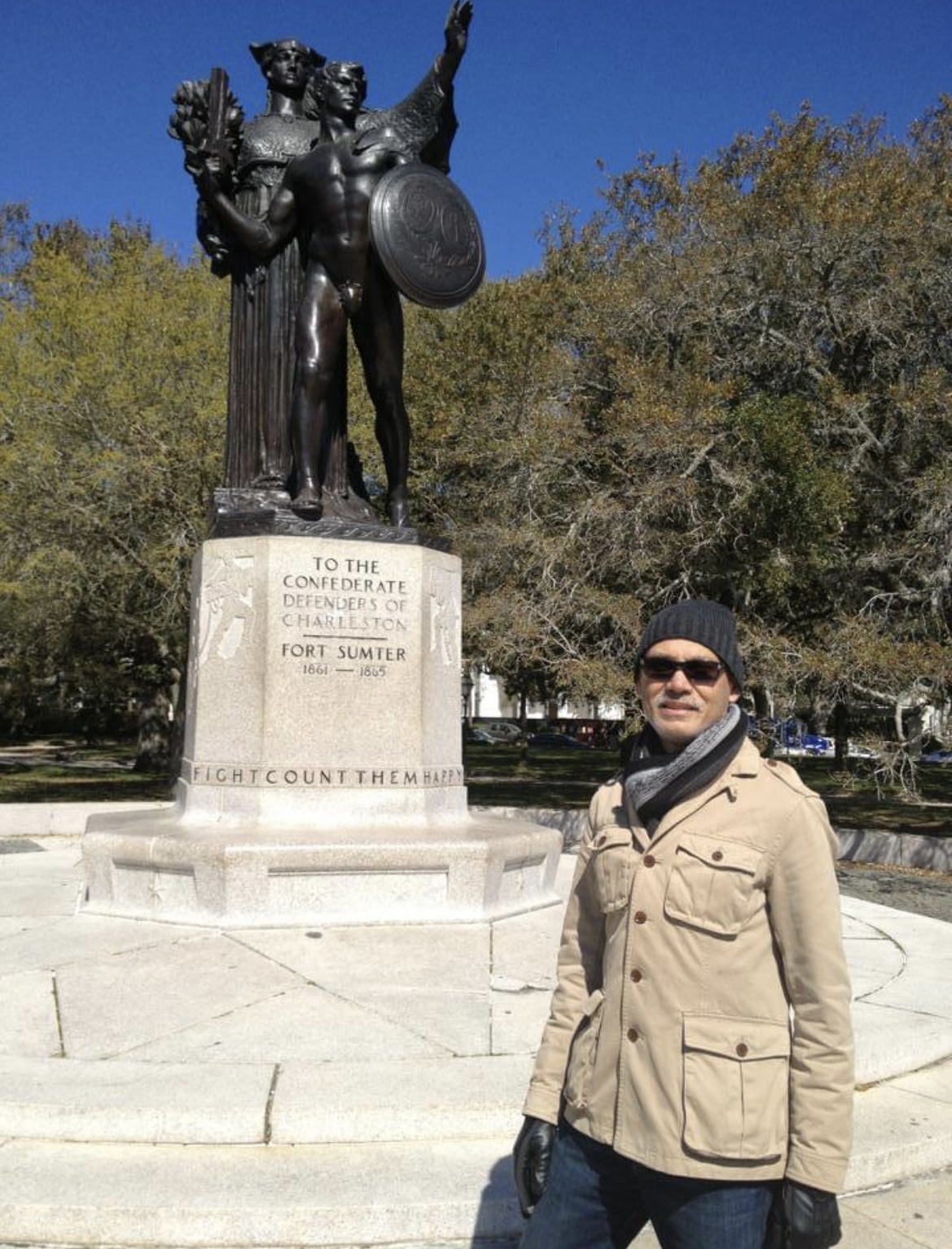
Also nearby was the grave of a four-star general, Mark Clark, who had served in the Second World War and the Korean War and later served as the President of the Academy. The grave was simple and austere. There was nothing ostentatious about it.
Large items of weapons were on display on the four sides of the quadrangle, including artillery guns and helicopters. But what caught my eye was the Sherman tank parked in the center of one side. I recognised it immediately because it had also served in the Pakistan Army.
What could be more ironic than to put a weapon on display in the academy of the South whose name was associated with the man who decimated the armies of the South? Admittedly, much time had elapsed since the Civil War ended. Two World Wars and the Vietnam War had been fought since and perhaps they had bridged the great divide between the North and the South.
He said "They think we own slaves and beat them if they don’t do the tasks assigned to them." What could I say? I had touched a nerve. The grievances surfaced faster than I had expected. Where was the reconciliation that had been heralded soon after the war ended?
But I had been told that the South had never reconciled to its defeat. And, true to form, the Civil War was not called by that name in the South. It was called the War of Northern Aggression. That’s something I had never heard before.
The next day, while touring the local markets, we discovered that one of the long buildings had a big sign engraved on top of its entrance: “In Honor of the Daughters of the Confederacy.” Further down, along the waterfront, we saw a few monuments to the soldiers of the Confederacy. These had survived the ravages of the time. Later, we decided to take a harbor cruise to view Fort Sumter, where the first shots of the war that would last four years were fired.
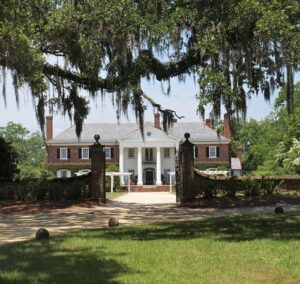
The Civil War killed 620,000 American soldiers, a herculean number that approximately equals the sum total of those who died in the Revolutionary War, the War of 1812, the Mexican War, the Spanish American War, World War I, World War II, and the Korean War.
Interestingly, our tour boat had left from “Union Pier.” The view of the fort matched the pictures I had seen earlier. It was not particularly impressive. What had put the fort on the map was what happened there, not its architecture.
I spotted the captain of the boat. He was walking around talking to his guests. I decided to chat with him. I said we had traveled from California to rediscover the civilisation of the south. And we had wanted to see the state flag with the Confederate flag embedded in it but all we had seen thus far were the star and stripes of the national flag.
He said "You will have to travel to the state capital of Columbia to see that flag." And then I told him about the Sherman tank in The Citadel and saw the expression on his face change. But that was trumped by the expression that came when I told him that his very own ship had docked at Union Pier. I said that my dream of discovering the pre-war civilisation of the South remained unfulfilled.
Now he put his guard down. He said "You have no idea what they think of us." It was unclear who ‘they’ were. I assume he meant the Yankees from the North. He said "They think we own slaves and beat them if they don’t do the tasks assigned to them." What could I say? I had touched a nerve. The grievances surfaced faster than I had expected. Where was the reconciliation that had been heralded soon after the war ended?
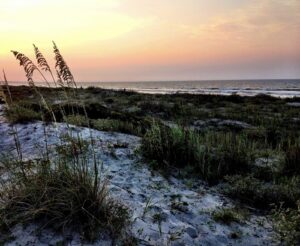
On the way back to the harbour, we went past a whole flotilla of sailing boats, saw an amazing suspension bridge, an aircraft carrier and a submarine. This was the postbellum Charleston.
The city had reinvented itself into one of America’s top tourist attractions. The downtown area, brimming with centuries-old mansions and cobblestone streets, has been called ‘a living museum’. It hosts a lively art scene and top-rated restaurants designed to provide you a taste of just about anything your heart desires. Its “Lowcountry” cuisine represents a mingling of French, Spanish, African and Caribbean cultures that took place over centuries of its sometimes tumultuous history.

On our last day, we drove off to check out the tea gardens on Kiawah Island. The gardens were beautifully laid out and a pleasure to walk in. You could literally smell the roses. The spacious southern mansions were stunning in their grandeur. We had lunch in one of them, saw a model house that appears on HGTV, and walked along the seashore.
In Charleston, Southern hospitality was on full display. While the old civilisation may have indeed disappeared with the wind, remnants of that civilisation survive. You just have to look for them.
On a future visit, I intend to check out the annual springtime Festival of Houses and Gardens. It offers a rare glimpse into more than 150 private homes and walled gardens.

